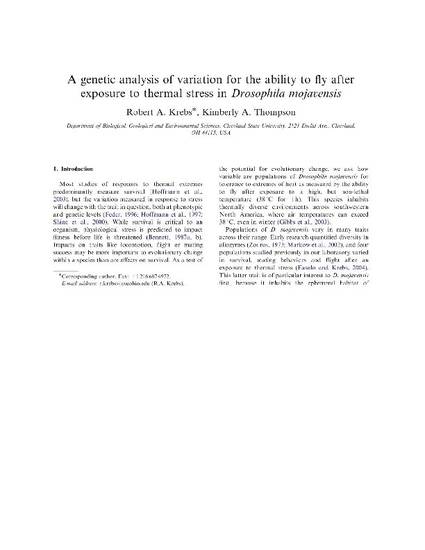
- Biodiversity and
- Biology
To help us understand how adaptive tolerance to heat stress has evolved, we made F1 hybrid crosses and backcrosses amongst populations of Drosophila mojavensis, and tested their ability to fly after exposure to a debilitating, but non-lethal, heat stress. Previous work identified that these populations vary in thermotolerance as measured for a variety of traits. Hybrid superiority was observed when crossing all four pairs of strains. Patterns of inheritance in flight ability after stress varied depending on which strains were used to set up complete reciprocal backcrosses, and, for both population pairs, results supported a multigenic model. This quantitative inheritance may be an outcome of the many different physiological and biochemical systems recently shown to influence muscle activity during heat stress. Therefore, the ability to maintain flight in the presence of high temperatures has the potential to vary considerably among populations in nature. As effects occur at temperatures well below those causing mortality, variation in this trait may greatly impact organismal fitness.
